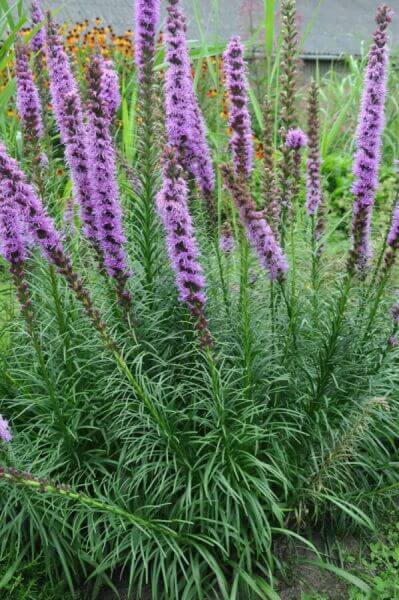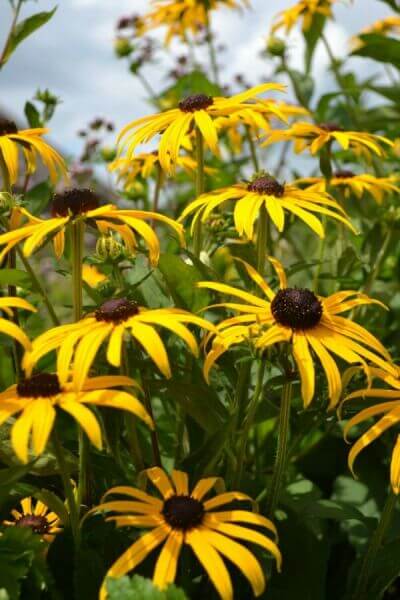Hedge Plants For Noise Buffering
Hedge Plants For Noise Buffering
Blog Article
Best Hedging Plants For Garden Screens
Boost your garden's appeal with lavish hedge varieties such as Yew (Taxus), Thuja, Laurel, Photinia, and Bamboo, commemorated for their structural integrity and environmental advantages.
Yew and Thuja provide evergreen protection and winter strength, while Laurel offers quick growth and broad, aromatic leaves.
Photinia adds seasonal beauty with its vibrant red foliage, and Bamboo provides a low-maintenance, tranquil ambiance.
These hedges enhance air quality, reduce sound, and develop tranquil, private areas.
Correct planting, spacing, and maintenance guarantee energetic growth and ecological harmony.
Check out how these lavish varieties can raise your garden's beauty and well-being.
Secret Takeaways
Change Your Garden With Lush Hedge Varieties
- Select Yew for its dense, evergreen development and unrivaled durability.
- Go with Laurel for its fast growth and broad leaves, guaranteeing fast personal privacy.
- Pick Photinia for its vibrant seasonal foliage, which turns a striking dark red.
- Utilize Bamboo for a low-maintenance, winter-hardy hedge with aesthetic appeal.
- Space plants 2-3 per meter and prune routinely for ideal development and health.
Popular Hedge Plants
When transforming a garden with rich hedge ranges, it's important to consider popular hedge plants such as Yew, Thuja, Laurel, and Photinia due to their special attributes and advantages.
Yew (Taxus) is highly respected for its longevity and thick, green growth, making it a prime choice for enduring landscapes.
Thuja is noted for its evergreen foliage and robust winter strength.
Photinia includes seasonal vibrancy with red leaves that darken in time, producing dynamic visual appeal.
Laurel offers rapid development and fragrant, broad leaves, suitable for fast privacy.
Furthermore, Bamboo is an exceptional option for ambiance, using a low-maintenance, winter-hardy choice that improves the garden's visual with its classy, swaying canes.
These choices accommodate a range of horticultural needs and choices.
Benefits of Garden Hedges
Garden hedges use a multitude of advantages, making them an important addition to any landscape. These natural barriers are cost-efficient to carry out and supply significant wind defense, boosting air blood circulation and adding to noise decrease. The thick foliage of hedges like Thuja and Beech makes sure personal privacy by obstructing visibility, developing a serene and remote environment.
Hedges also play a vital role in microclimate guideline, offering a steady environment that fosters plant development and minimizes temperature level variations. Their elaborate leaf structures filter toxins, improving air quality and adding to a much healthier garden ecosystem.
Furthermore, hedges master noise decrease, soaking up and deflecting sound waves to lower ambient noise levels. This dual performance of supplying both visual and acoustic personal privacy boosts the overall serenity and visual appeal of any garden.
Planting and Upkeep Tips
For an effective hedge, meticulous preparation of the planting area is essential. Guarantee the soil has appropriate pH and drain to support strong root advancement.
Area the plants properly for the chosen species. Water the hedge frequently during its initial growth phase, adjusting as needed with seasonal changes.
Carry out a methodical insect control and disease prevention technique, utilizing organic or chemical treatments when required. Routinely examine for aphids, termites, and fungal infections.
Apply mulch to keep moisture and suppress weeds. Seasonal pruning promotes dense growth and air circulation, essential for plant health.
Following these guidelines will assist you cultivate a dynamic, properly maintained hedge that boosts the appeal of your garden.
Spacing and Trimming Standards
Spacing and Trimming Standards
Proper spacing and cutting are essential for cultivating healthy, aesthetically appealing hedges. Adequate spacing makes sure each plant gets sufficient nutrients, light, and air flow.
Follow these guidelines for optimal hedge upkeep:
- Spacing: Position hedge plants 2-3 plants per meter to motivate robust development.
- Pruning Techniques: Regular pruning is essential for maintaining preferred hedge height and shape. Trim brand-new development in summer season and cut down older wood during winter season.
- Seasonal Care: Change cutting techniques and schedules according to seasonal requirements to guarantee plant health.
- Hedge Height: Frequently display and trim to preserve the wanted hedge height and achieve uniform visual appeals.
Abiding by these actions will ensure your hedge grows, enhancing both the appeal and performance of your garden.
Selecting the Right Hedge
Selecting the Right Hedge
Choosing the appropriate hedge includes assessing elements such as fully grown height, foliage density, and environmental strength. Effective hedge plant choice requires understanding each species' development characteristics and site-specific flexibility.
For instance, Yew (Taxus) uses outstanding longevity and thick growth, while Thuja is notable for its winter strength. Additionally, thinking about maintenance requirements is crucial; fast-growing types like Laurel or Privet need regular trimming, whereas low-maintenance options like Bamboo or Ivy may be preferable for those looking for very little maintenance.
Environmental elements such as soil type, light schedule, and wetness conditions must likewise direct the selection process. This careful approach makes sure the picked hedges will prosper, supplying both visual and practical benefits to the garden landscape.
Shipment and Planting Recommendations
To ensure your hedge plants grow, they must be provided by specialized carriers and planted quickly upon arrival.
Follow these vital steps for successful planting:
- Soil Preparation: Improve the soil with organic matter to improve drain and nutrient content.
- Planting Depth: Create a trench two times the width and equivalent to the depth of the root ball.
- Watering Strategies: Water thoroughly after planting, keeping the soil regularly damp but not saturated.
- Mulching: Apply a layer of mulch to keep moisture and suppress weeds.
Customer Support and Service
Provided the vital role of timely assistance in horticultural pursuits, our client support group is readily available 6 days a week through telephone, e-mail, and social media to offer expert guidance and quickly attend to any issues. Their devotion to fast action times guarantees client fulfillment by solving questions connected to plant health, optimum planting approaches, and upkeep schedules.

-------------------
Telephone
Within 2 days
Within 24 hours
This extensive support group, enhanced by an excellent 9.3/ 10 customer rating, highlights our commitment to enhancing the gardening experience for each customer.
Often Asked Concerns
The Length Of Time Does It Consider Hedge Plants to Develop?
Hedge plants usually require one to 3 click here years to end up being totally developed, with the exact duration differing by species and growing conditions.
Reliable care during this vital period is necessary for robust development. Constant watering, alert weed control, and proper fertilizer application are pivotal in promoting strong root development.
For example, fast-growing species like Laurel may establish quicker, while slower-growing ranges such as Yew may take longer. Diligent upkeep speeds up the facility procedure, resulting in healthy and dense hedges.
What Are the Best Hedge Plants for Privacy?
The concern of the finest hedge plants for personal privacy includes assessing evergreen and deciduous choices.
Evergreen hedges like Thuja, Laurel, and Cypress offer year-round coverage, making sure continuous personal privacy.
In contrast, deciduous hedges such as Beech use seasonal personal privacy, shedding leaves in chillier months.
Secret maintenance tips for personal privacy hedges consist of regular trimming, fertilizing in spring, and correct spacing-- normally 2 to 3 plants per meter.
In addition, consistent watering and persistent weed elimination are crucial for promoting healthy, dense development.
Can Hedge Plants Bring In Wildlife to My Garden?
Yes, hedge plants can attract wildlife to your garden by offering vital advantages like shelter, food, and nesting sites, thus boosting regional biodiversity. For instance, yew, holly, and laurel are outstanding for bring in birds, while ivy supports a range of insects.
Nevertheless, it is necessary to keep in mind that there are some disadvantages, such as increased upkeep to manage insects and routine upkeep. Thoroughly selecting and preserving hedge ranges can help stabilize these downsides and benefits, ultimately cultivating a vibrant and sustainable environment in your garden.
Are There Any Flowering Hedge Plants Available?
Yes, there are flowering hedge plants readily available that can enhance the charm of your garden.
For instance, Elaeagnus, likewise known as Olive Willow, produces aromatic white flowers in the fall, adding a touch of sophistication.
Photinia, another popular option, showcases vibrant red leaves that develop into an abundant green, developing a dynamic visual effect throughout the seasons.
To guarantee these plants prosper, it's vital to practice appropriate pruning methods and seasonal upkeep, such as cutting brand-new development in the summer and cutting back in the winter.
These steps will assist preserve the health and visual appeal of your blooming hedges.
How Do I Avoid Bugs in My Hedge Plants?
To avoid bugs in hedge plants, use natural pest control methods and maintain proper hedge care. Introduce advantageous bugs like ladybugs, which take advantage of hazardous insects, to produce a balanced community.
Routinely examine your hedges for signs of infestation and quickly eliminate any affected parts to prevent the spread. Ensure the health of your hedges by applying well balanced fertilizers and supplying appropriate water.
Make use of mulching to keep soil moisture and proper spacing to reduce plant stress and promote robust growth. These practices collectively assist in decreasing insect problems and maintaining a healthy hedge.
Conclusion
In essence, choosing the ideal hedge ranges such as Yew, Thuja, and Laurel can transform any garden into a tranquil sanctuary. These plants supply year-round greenery, enhance visual appeal, and deal practical advantages like sound reduction and wind protection.
Correct planting methods, accurate spacing, constant watering, and seasonal trimming are vital for optimum growth.
Reputable delivery services and skilled client support guarantee a seamless experience from purchase to planting, making it easier than ever to elevate your outside space.
Garden hedges use a wide variety of benefits, making them a valuable addition to any landscape. These natural barriers are economical to execute and provide substantial wind security, enhancing air flow and contributing to noise decrease. The thick foliage of hedges like Thuja and Beech guarantees personal privacy by blocking visibility, producing a serene and remote environment.

Pruning Strategies: Routine pruning is necessary for keeping preferred hedge height and shape. Trim brand-new growth in summer and cut back older wood throughout winter.
Report this page